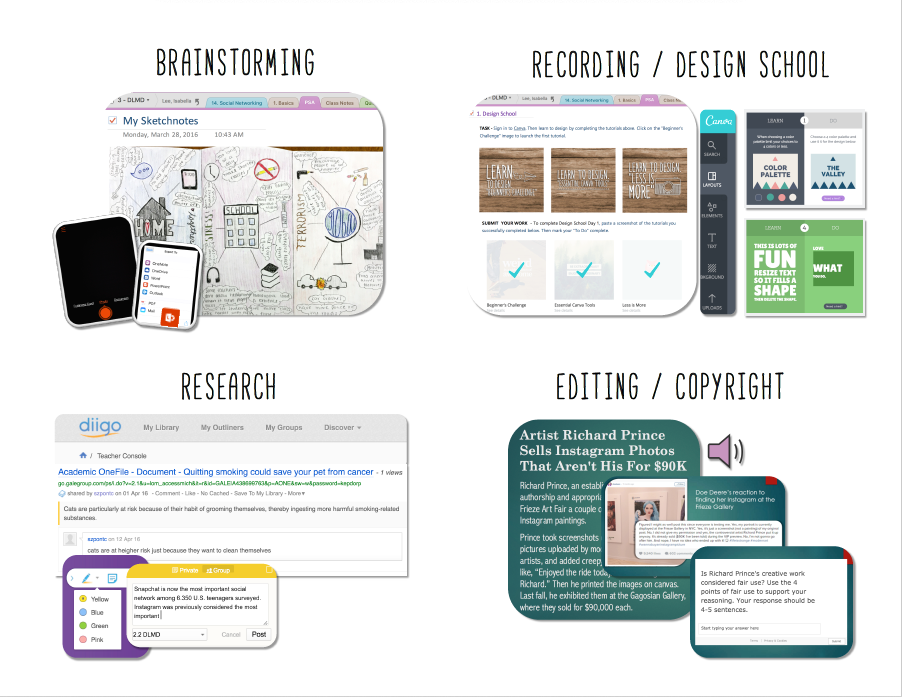2.6 |
Facilitator
|
2.6a |
Foster a culture where students take ownership of their learning goals and outcomes in both independent and group settings.This lesson I designed for 21things4students.net which is written for students in grades 5-9. I implemented this lesson with all of my seventh grade students at the beginning of the school year. The lesson opens with an introduction to the Myers Briggs Personality Test. Students are then provided with "I CAN STATEMENTS." These statements allow students to answer three key questions: Where am I now? Where am I going? How do I get there? The "I CAN STATEMENTS" foster a culture where students take ownership of their learning goals and outcomes (slide 1). As a result of the introduction and completing a variation of the Myers Briggs Personality Test, students develop an awareness of their preferences as a learner (slide 2). Students then learn about setting SMART goals and the goal setting process (slide 3). Through this activity students are provided with the foundational skills needed to take ownership of their learning goals in both independent and group settings.
|
2.6b |
Manage the use of technology and student learning strategies in digital platforms, virtual environments, hands-on makerspaces or in the field.I developed the “Search Resources” feature on 21things4educators.net. This feature allows educators to search and filter resources on 21things4educators.net by type, “Thing”, or ISTE Educator Standard. This functionality leverages two Google apps-- Google Sheets and Awesome Table. On slide 1 you can see how the digital resources are managed on the backside. On slides 2 you can see the user experience and functionality this adds to 21things4educators.net. On slide 3 I show the Maker Space collection I manage. On slide 4 I show a professional learning library I manage for technology coaches and curriculum directors in the county. This library enables users to copy professional development resources into their district's instance of Schoology and customize the resources to support their district initiatives.
|
2.6c |
Create learning opportunities that challenge students to use a design process and computational thinking to innovate and solve problems.
In this webinar I deconstruct a design thinking lesson and challenge educators to consider how design thinking can be used to approach some of the world's biggest problems. In particular, we use design thinking to consider solutions to a sustainable development goal. In part two of this webinar I introduce the core concepts of computational thinking. This includes a conversation about the dispositions of computational thinking and natural places in the curriculum where all educators can teach elements of computational thinking. At the end of the webinar educators had an opportunity to sign up for code.org and begin a self-paced course of their choosing to experience computational thinking from a student perspective.
|
2.6d |
Model and nurture creativity and creative expression to communicate ideas, knowledge or connections.I model and nurture creativity and creative expression to communicate ideas, knowledge, or connections in a number of ways. In the "Brainstorming" image you can see how I modeled using Sketchnotes to capture ideas on pencil and paper first and then with the Office Lens App I modeled how to archive Sketchnotes in OneNote Classroom Notebook. This was modeled as a method to brainstorm potential topics for a Genius Hour project in the Digital Literacy and Media Design class I taught. In the "Recording/Design School" image you can see how I used Canva's design tutorials in class to help students develop skills and eye for content design. In the "Editing/Copyright" image you can see a snippet of the editing and copyright lesson I taught to help students understand how copyright and Creative Commons work. By understanding the basics of both, students can creatively remix the work of others.
|

